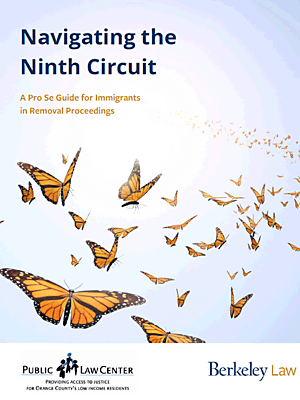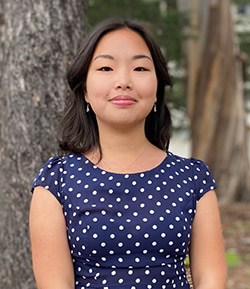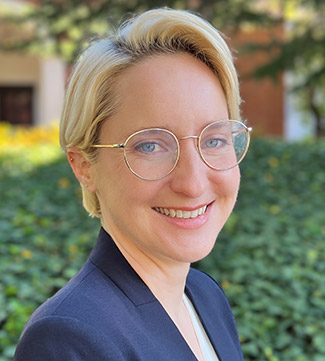By Gwyneth K. Shaw
During his two years as a staff attorney at the Public Law Center, Fraser Muir LL.M. ’19 noted a sad and frustrating statistic: For every case he and his colleagues worked on representing immigrants fighting removal actions before the U.S. Court of Appeals for the Ninth Circuit, there were at least 10 more they couldn’t take.
“Many pro bono and nonprofit attorneys simply do not have the resources or expertise to handle these cases,” Muir says. “Appellate review gives non-citizens in removal proceedings a vital opportunity for closer scrutiny of their case, but there is such a high barrier to entry to this review given the lack of representation and complexity of the procedure.”
 He hit on an idea: What if he put together a how-to guide to give immigrants a shot at working their cases on their own? Muir, who had collaborated with Berkeley Law students on habeas cases during the height of the COVID-19 pandemic, knew just where to go to find help.
He hit on an idea: What if he put together a how-to guide to give immigrants a shot at working their cases on their own? Muir, who had collaborated with Berkeley Law students on habeas cases during the height of the COVID-19 pandemic, knew just where to go to find help.
Pro Bono Program Director Deborah Schlosberg put Muir in touch with leaders of the Berkeley Immigration Group (BIG), one of the law school’s Student-Initiated Legal Services Projects. He and a crew of J.D. and LL.M. students — all but two now alumni — produced “Navigating the Ninth Circuit: A Pro Se Guide for Immigrants in Removal Proceedings,” aimed at helping demystify the court and the appeals process.
The goal is to distribute the guide in immigrant detention centers across the Ninth Circuit, which handles appeals from courts in Alaska, Arizona, California, Hawaii, Idaho, Montana, Nevada, Oregon, Washington, and the Northern Mariana Islands. In the future, the authors hope to translate it into multiple languages, including Spanish, Mandarin, Vietnamese, and French. The Public Law Center is already distributing it to clients, and the Adelanto Visitation Network is giving it to all detainees they visit.
It’s an “imperfect solution to a complex problem,” Muir says, but a necessary one. Circuit court review is often critical in removal proceedings, he adds, because prior to that the cases are handled by administrative judges in the U.S. Department of Justice’s Executive Office for Immigration Review, where the high volume of cases often leads to legal and factual errors.
The main purpose is to “increase access to justice for a large portion of unrepresented non-citizens,” Muir says.
“The Ninth Circuit is a daunting venue. The guide aims to demystify these proceedings and give people the tools they need to litigate their case, even without an attorney,” he says. “Secondarily, it’s also likely to be a helpful primer for attorneys who are looking to learn more about these proceedings and offer an approachable intro to this forum.”
The guide is comprehensive, covering everything from the structure of the court itself to nitty-gritty details about filing fees and the variety of motions that are commonly used in these cases. While other pro se handouts tend to be surface level, this 65-page document is a step-by-step manual to help immigrants preserve their appellate rights.

“We hope that it gets shared as much as possible and that it empowers non-citizens to access the Ninth Circuit,” says Myka Yamasaki ’23, a recent BIG leader and student coordinator for the guide along with classmate Renée Coe. “Our immigration system has been intentionally designed to be inaccessible and hostile to non-citizens and the guide is one way to combat that.”
Yamasaki and Coe worked on the project for more than a year, handling logistics and helping Muir push the final version over the finish line. The report was written by Harriet Steele J.D. ’22, Xingyi Li J.D. ’23, and now-3Ls Sinead Foley and Emma Liberman, as well as members of the LL.M. class of 2022: Yangmingyue Li, Glenda Ozaeta, Sumedh Rishi, and Chaohui Ying. Chen-Yuan Cheng LL.M. ’22, who died during the spring of 2022, also worked on the project.
It was challenging to manage multiple changes to the student team while also coordinating other BIG projects, Yamasaki says, but the hope that the guide will make a significant impact is a huge reward.
Coe shares that aspiration, calling the guide a fitting end to her work with BIG.

“I knew coming into Berkeley Law that I wanted to do pro bono work related to immigration law, and I appreciated that BIG approached immigration law and anti-detention work from an abolitionist perspective,” Coe says.
When she first got involved with the group, in the fall of 2020, COVID was spreading through immigration detention centers and BIG students were filing emergency parole requests to get people with underlying medical conditions released.
“Even though school and pro bono work were all on Zoom that semester, I felt like through BIG I was able to do something tangible and meaningful,” Coe says. “I hope that this guide can be a helpful resource for people who are forced to navigate the appeal process on their own.”
The guide is a lasting legacy for the whole team, including Muir, who kept working on the project even after moving to Burke, Williams & Sorensen in 2022.
“I knew that Berkeley Law students would be ideal to assist,” Muir says. “And they have been incredible.”
It’s a further testament, he adds, to the depth and excellence of the law school’s pro bono culture: the Class of 2023 completed about 30,000 hours of pro bono work, according to Schlosberg.
“The Pro Bono Program at Berkeley Law is a way that our students can begin to create more access to justice before they even graduate,” she says. “BIG’s effort here, under Fraser’s supervision, is an example of how that is possible.”